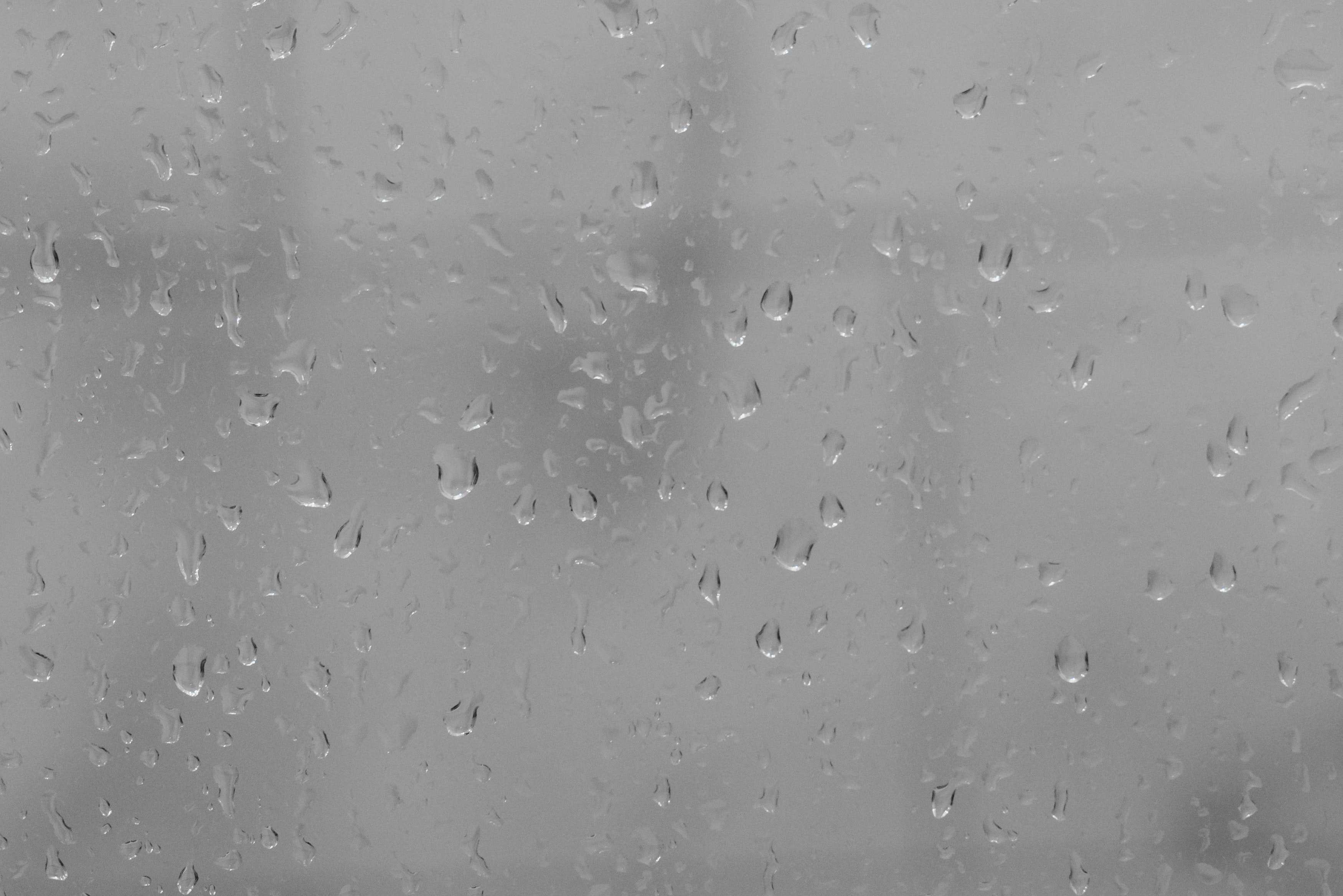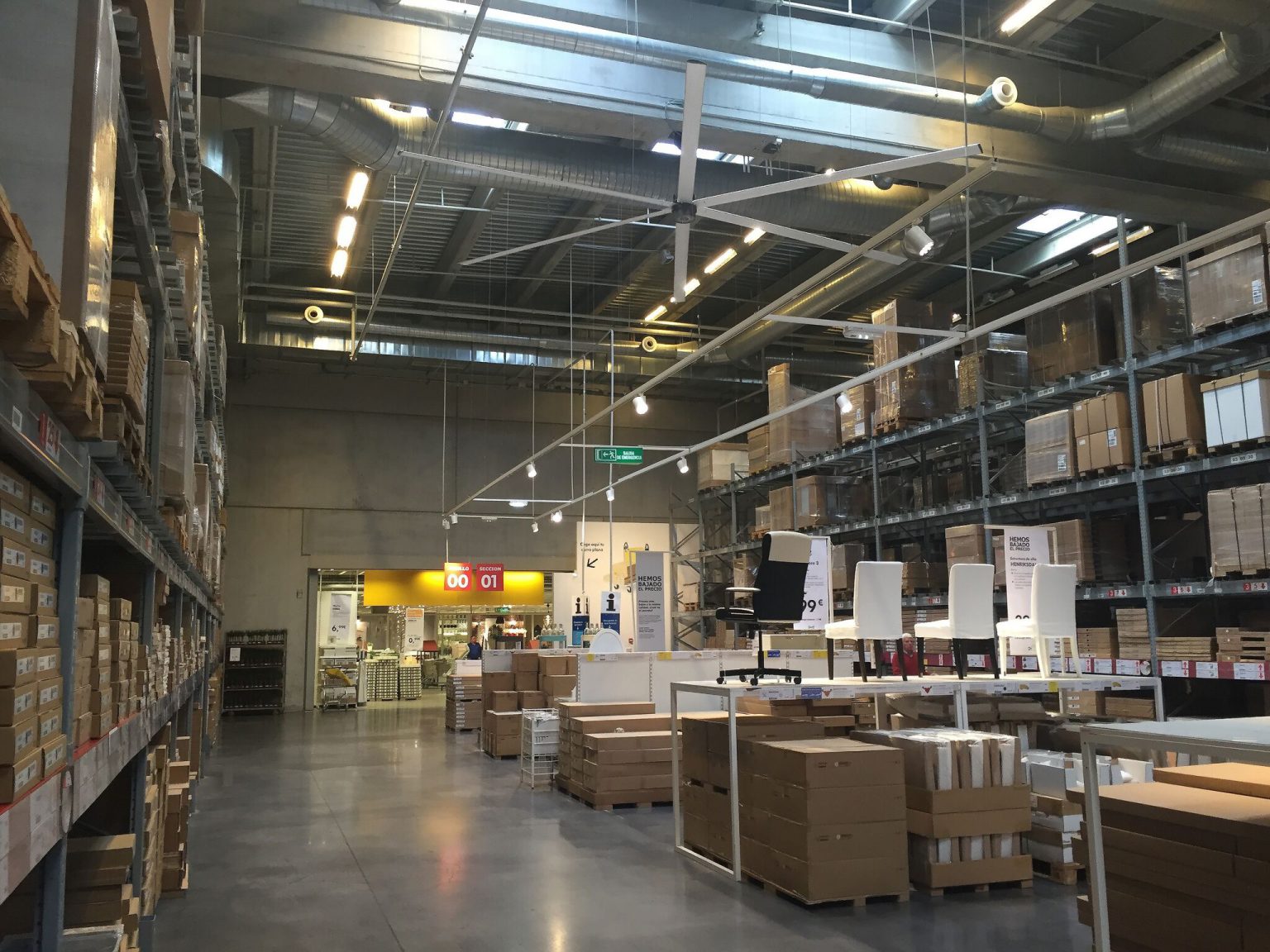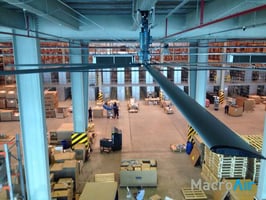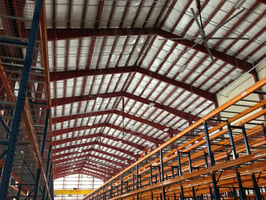Expert Interview: How to Properly Prevent Sweating Slab Syndrome
Sweating Slab Syndrome (SSS) is a dangerous condition that plagues many warehouses and compromises worker safety and causes product degradation.
SSS develops inside a building with a concrete slab floor. This happens when atmospheric conditions in the building begin to match the conditions outside. As this happens, moisture migrates to the coldest point. If it’s a dew point, it’s going to condense on
whatever material is there or the slab, which is typically going to be your coldest point. Moisture plus workers and heavy equipment are a poor match, leading to potentially serious accidents.
Warehouse cooling expert, Jim Stahl will answer common questions that facility and warehouse managers have regarding sweating slabs. Stahl is well-versed in the risks associated with SSS and ideal solutions for facilities to prevent a sweating slab.
How Does Sweating Slab Syndrome Happen?

Sweating Slab Syndrome will most likely develop where the owners or operators can’t afford to air condition or dehumidify. It takes more than just cooling the building back down to solve the problem. Warehouse cooling expert, Jim Stahl, advises that,
“Dehumidification and air conditioning are both expensive solutions that may be out of your immediate reach, no matter what you may want to do.”
As the day heats up, the level of humidity inside the building rises to match the humidity levels outside. If it’s extremely humid outside, the sweating slab issue inside the building gets even worse. This is especially true if the area experiences large temperature swings as a result of cold nights and hot days.
Lack of ventilation and poor ventilation also contribute to the sweating slab syndrome. Having ventilation running doesn’t solve the problem. This just brings hot, humid outside air into the warehouse without removing any of the accumulated air and humidity from inside the building.
How Can You Prevent Sweating Slab Syndrome?
To control the humidity inside your warehouse, the facility manager needs to thermally equalize the warehouse. In simple-to-understand terms, you move the inside air from the top of the building down to the bottom many times during the day. As this is happening, the temperature equalizes to within one or two degrees. This affects the interior humidity level, bringing it down and preventing the formation of moisture on the concrete slab floor.
What is the Best Way to Keep Concrete in Warehouses Dry?

If you have High Volume, Low Speed (HVLS) fans installed throughout your warehouse, you immediately notice that the concrete slab stays drier throughout the day, even when outdoor temperatures and the humidity level are going up. Stahl also notes that,
“When you operate those HVLS fans throughout the day, you’re going to spend less money than you would in paying for new equipment that has been destroyed in an accident caused by accumulated moisture on your warehouse’s concrete slab.”
Stahl goes on to note, in one example, a situation where a forklift truck was unable to stop on a wet slab and ran off a loading dock onto the pavement outside the warehouse. Another occurrence was when a tractor-trailer truck was unable to stop and destroyed the forklift and its contents. A similar type of accident can place your warehouse workers at risk of physical harm.
What is the Best Solution to Keep Your Employees Safe?
.jpg?width=800&height=534&name=Industrial_Warehouse_Lift_Truck_Center_Springfield_MO_MacroAir_AVD780_20ft_Powdercoated_Red_6%20(1).jpg)
HVLS fans are the ideal solution to eliminate a sweating slab in a warehouse. The HVLS fans will move around the air in your building so that the temperatures from the ceiling to the floor are nearly equalized. This will reduce the humidity throughout your entire warehouse, which means the concrete slab is much less likely to grow wet and your employees will stay safer.
Your workers have to operate safely, using established safety procedures, inside your warehouse. To increase the safety in your warehouse, use a proven solution like HVLS fans to reduce the humidity levels and remove any condensation. Stahl advises that,
“Simply turning the fans on when you arrive to the warehouse is, in most cases, enough to create a safe and comfortable environment for your employees.”
Summary
Turn to the experts when you realize your building is suffering from Sweating Slab Syndrome. Your main goal should be to prevent injuries to workers as well as damaged or destroyed equipment. In addition, you can help prevent sweating slab syndrome by installing HVLS fans. They will help preserve your building and its contents.
Subject matter expert, Jim Stahl, is well versed in HVAC and holds a Bachelor of Science degree in Business and Technology Management with an emphasis in Applied Science, specifically in HVAC/R Technologies. Jim is the Applications Manager for MacroAir fans, before which he was a Regional Sales Manager. Prior to his role with MacroAir Fans, Jim was the Regional Manager of Technical Services for Wal-Mart Stores, Inc. While at Wal-Mart, Stahl was responsible for the HVAC, refrigeration, and energy management activities for Northeastern stores.


